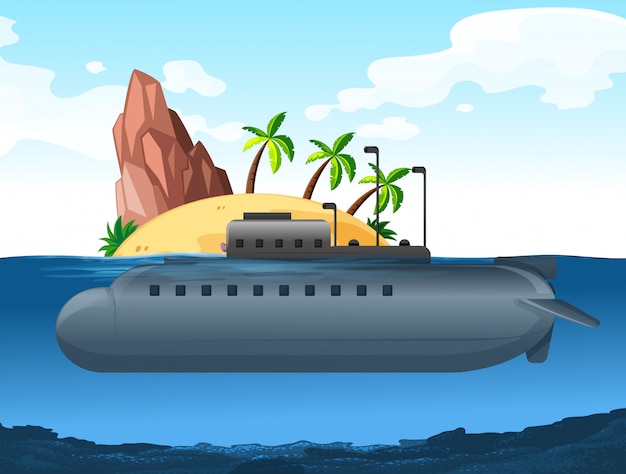Fascinating Facts About the Mariana Trench

The Mariana Trench is the deepest part of the world’s oceans, reaching a depth of 36,070 feet (10,994 meters).
The trench is located in the western Pacific Ocean, near the Mariana Islands.
The pressure at the bottom of the Mariana Trench is over 1,000 times greater than at sea level.
The trench was named after the nearby Mariana Islands, which were in turn named after Queen Mariana of Austria.
The Mariana Trench is home to various unique and mysterious species, including the Mariana snailfish.
The trench was first explored in 1875 by the British ship HMS Challenger.
The Challenger Deep, a small depression within the Mariana Trench, is the actual deepest part of the trench.
The Mariana Trench was formed as a result of the collision between two tectonic plates.
The temperature in the trench is near freezing and remains relatively constant.
The water pressure at the bottom of the Mariana Trench is equivalent to having about 50 jumbo jets stacked on top of you.
The Mariana Trench is a part of the Ring of Fire, a major area in the basin of the Pacific Ocean where many earthquakes and volcanic eruptions occur.
Despite the extreme conditions, scientists have discovered signs of life even at the deepest depths of the Mariana Trench.
The Mariana Trench is more than 1,500 miles long.
There have been very few manned expeditions to the Mariana Trench due to its extreme conditions.
The first person to reach the bottom of the Mariana Trench was film director James Cameron in 20
Fascinating Facts About the Mariana Trench part 2
Studying organisms in the Mariana Trench can provide insights into the limits of life on Earth and the potential for life on other planets.
The Mariana Trench is deeper than Mount Everest is tall.
The trench is not always completely dark, as bioluminescent creatures are known to inhabit the depths.
The Mariana Trench is a UNESCO World Heritage Site.
The water in the Mariana Trench is perpetually devoid of sunlight, making it a challenging environment for photosynthesis.
The Mariana Trench is a relatively narrow and elongated trench.
The first detailed bathymetric map of the Mariana Trench was created in 195
The immense pressure at the bottom of the Mariana Trench can cause organisms to collapse or explode if brought to the surface too quickly.
Many parts of the Mariana Trench remain unexplored and unmapped.
The Mariana Trench is an important area for scientific research and discovery.
The deepest part of the Mariana Trench, the Challenger Deep, has a maximum width of about 2.5 miles.
Due to its remoteness and extreme conditions, the Mariana Trench is considered one of the most inhospitable places on Earth.
The Mariana Trench is a popular topic in popular culture, often referenced in movies, books, and documentaries.
The sound recorded in the Mariana Trench can travel hundreds of miles due to the density of the water.
The Mariana Trench was formed as a result of the Pacific Plate subducting beneath the Philippine Sea Plate.
The Mariana Trench is an area of significant geological activity, with frequent earthquakes and volcanic eruptions.
The trench is named after the Spanish explorer Antonio de la Rocha Mariana, who conducted extensive surveys in the region in the late 16th century.
The pressure at the bottom of the Mariana Trench is equivalent to about 8 tons per square inch.
The Mariana Trench represents a unique and relatively undisturbed ecosystem that scientists are still striving to understand.
The walls of the Mariana Trench are composed primarily of serpentine, a type of rock formed by the alteration of oceanic crust.
Exploring the Mariana Trench is logistically challenging, as it requires specialized equipment capable of withstanding extreme pressures.
The Mariana Trench is not the only deep trench in the Pacific Ocean, with others including the Kermadec Trench, Philippine Trench, and Japan Trench.
The water temperature at the bottom of the Mariana Trench is around 1-4 degrees Celsius (34-39 degrees Fahrenheit).
The Mariana Trench is a potential source of valuable mineral resources, including manganese nodules.
The unique physical and chemical conditions in the Mariana Trench have led to the evolution of organisms with specialized adaptations.
The Mariana Trench is an important area for geological studies, providing insights into the Earth’s crust and mantle.
The extreme pressure in the Mariana Trench can cause the melting point of certain substances, such as ice, to increase significantly.
The Mariana Trench is part of the larger Mariana Arc, a region known for its volcanic activity.
The Mariana Trench serves as a natural barrier between the Pacific Plate and the smaller tectonic plate to the west.
The exploration of the Mariana Trench continues to uncover new and fascinating aspects of the world’s oceans and our planet.

